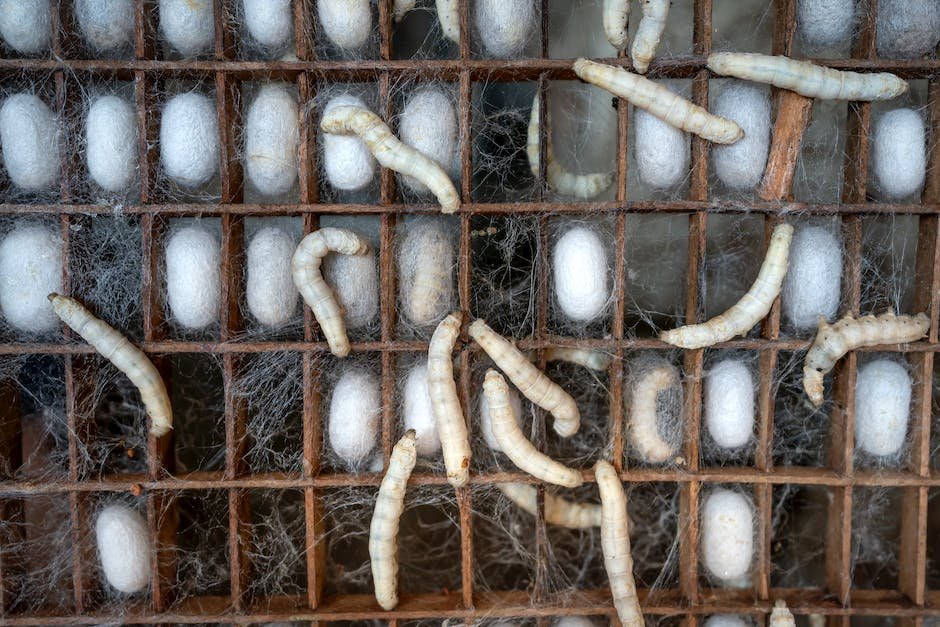Now Reading: How to Hunt and Cook Insects in the Wild
-
01
How to Hunt and Cook Insects in the Wild

How to Hunt and Cook Insects in the Wild
In the intricate tapestry of Mother Nature’s pantry, there exists a culinary adventure like no other – a bold journey into the realm of entomophagy, the art of hunting and cooking insects in the wild. Suspended on gossamer threads between poles of disbelief and curiosity, this age-old practice has woven itself into the very fabric of human survival, offering a surprising and sustainable source of nourishment. While some may recoil at the thought, others embrace this ancient tradition, recognizing the nutritional prowess and gastronomic potential that lies hidden beneath the veil of minuscule six-legged creatures. So, if you find yourself meandering through uncharted wilderness, yearning to discover extraordinary flavors and forge an unbreakable bond with nature’s smallest inhabitants, come on an extraordinary journey as we delve into the enigmatic world of hunting and cooking insects in the wild.
Table of Contents
- Understanding the Nutritional Value of Insects: A Guide to Sustainable Protein Sources
- Identifying Edible Insects in the Wild: Discovering Nature’s Bounty
- Mastering Insect Hunting Techniques: Tips and Tricks for Successful Foraging
- Preparation and Potential Risks: Ensuring Safe Consumption of Wild Insects
- Delicious and Nutritious Insect Recipes: Elevating Your Culinary Adventures
- Q&A
- In Conclusion

Understanding the Nutritional Value of Insects: A Guide to Sustainable Protein Sources
Insects might not be the first thing that comes to mind when thinking about protein sources, but they are indeed a highly sustainable and nutritious option. Not only can insects provide a significant amount of protein, but they also offer a wide range of essential nutrients. Let’s explore the nutritional value of insects and discover why they are gaining popularity as an alternative protein source.
Rich in Protein:
- One of the most compelling reasons to consider insects as a protein source is their impressive protein content. Insects often contain as much or even more protein per gram than traditional livestock, such as beef or poultry.
- This protein powerhouse is particularly beneficial for those looking to increase their muscle mass, support tissue repair, or maintain a healthy immune system.
Packed with Nutrients:
- Aside from their protein content, insects are also abundant in essential nutrients such as vitamins, minerals, and healthy fats.
- Beetles, crickets, and mealworms, for example, are rich sources of iron, calcium, and zinc, which play vital roles in various bodily functions.
- Beyond that, many insects contain beneficial omega-3 and omega-6 fatty acids, crucial for heart health and brain function. By incorporating insects into your diet, you can diversify your nutrient intake and support overall well-being.
Environmentally Friendly:
- One undeniable advantage of turning to insects as a protein source is their minimal impact on the environment.
- Compared to traditional livestock farming, insect rearing requires significantly less water, land, and feed. Insects also emit fewer greenhouse gases, making them a more sustainable alternative.
- Choosing insects over conventional protein sources contributes to reduced deforestation, less water pollution, and a more environmentally conscious food system.
As the world embraces sustainable food choices, insects are emerging as a promising solution to our protein needs. Their high nutritional value combined with their gentle environmental footprint makes them an ideal option for those seeking a sustainable and well-balanced diet.

Identifying Edible Insects in the Wild: Discovering Nature’s Bounty
Exploring the wilderness can be an adventure filled with unexpected discoveries, and one such revelation lies in the vast world of edible insects. Discovering nature’s bounty comes with the excitement of finding unique delicacies that are both sustainable and nutritious. Identifying edible insects in the wild can be an enriching experience, allowing you to connect with nature in a whole new way.
When it comes to identifying edible insects, there are a few key factors to consider:
- Appearance: Observe the insect’s size, color, and unique patterns. While some edible insects may resemble their non-edible counterparts, it’s essential to educate yourself on the specific characteristics that set them apart.
- Habitat: Different insects thrive in different environments. Familiarize yourself with the habitats where edible insects are likely to be found. For example, some may dwell in rotting logs, while others prefer grassy meadows or the bark of trees.
- Behavior: Pay attention to how the insect moves or interacts with its surroundings. This can provide valuable clues that aid in identification. Knowing whether an insect is a burrower, crawler, or has flying capabilities can narrow down potential species.
It’s important to remember that not all insects are safe for consumption. Always err on the side of caution and consult reputable sources or experts before consuming any wild insect. Ensure that you are well-informed and aware of any potential risks or allergies. With proper knowledge and careful identification, you can embark on a fascinating journey into nature’s edible wonders.
Mastering Insect Hunting Techniques: Tips and Tricks for Successful Foraging
Hunting insects can be a challenging and rewarding endeavor. Whether you are a seasoned pro or just starting out, there are always new techniques and tricks to learn to improve your foraging skills. Here are some tips to help you master the art of insect hunting:
- Be patient: Insect hunting requires a lot of patience. It’s important to stay still and observe your surroundings quietly. Many insects are sensitive to movement and noise, so being patient and not rushing is key.
- Know your target: Different insects have different habits and preferences. Before setting out on your hunting expedition, do some research to understand the behavior, habitat, and food sources of the insect you want to hunt. This knowledge will increase your chances of success.
- Use the right tools: Having the right tools can make a world of difference in your insect hunting experience. Equip yourself with a good set of insect nets, containers, magnifying glasses, and field guides. These tools will not only assist you in capturing insects but also help you identify them correctly.
- Observe and learn: Take the time to observe the natural behavior of insects in their habitats. Watch how they move, interact with their environment, and find food. This observation will give you valuable insights into their patterns and make it easier for you to locate and capture them.
- Stay curious and keep learning: Insect hunting is a continuous learning process. Stay curious about the fascinating world of insects and keep expanding your knowledge. Attend workshops, read books, or join local entomology clubs to learn from experts and fellow enthusiasts.
Remember, mastering insect hunting techniques takes time and practice. Enjoy the process, respect nature, and always release the insects unharmed after your observations. Happy hunting!
Preparation and Potential Risks: Ensuring Safe Consumption of Wild Insects
When it comes to exploring the world of wild insects as a potential food source, proper preparation is crucial to ensure safe consumption. While insects are a sustainable and protein-rich option, there are certain risks involved that need to be addressed.
Preparation:
1. Sourcing your insects:
- Only collect insects from areas free of pollutants or chemicals that may pose a health risk.
- Always ensure that you can positively identify the species you’re collecting and consuming.
2. Cleaning and removing toxins:
- Thoroughly rinse the insects with clean water to remove any dirt or debris.
- Check for signs of contamination, such as discoloration or unusual odors. If in doubt, discard.
3. Cooking methods:
- Ensure that insects are cooked properly to kill any potential pathogens.
- Frying, baking, or roasting can help eliminate harmful bacteria or parasites.
- Experiment with seasonings and marinades to enhance flavor and enjoyment.
Potential Risks:
1. Allergic reactions:
- Some individuals may have allergies to specific insect species. Start by consuming small quantities to test for any adverse reactions.
2. Toxicity:
- While most insects are safe to consume, there are a few exceptions. Avoid insects that are brightly colored, produce strong odors, or come from toxic environments.
3. Pesticide contamination:
- Be mindful of insects that may have come into contact with pesticides. Avoid areas near farmland or places where pesticides are commonly used.
By following these preparation guidelines and being aware of the potential risks, you can safely experience the unique and nutritious qualities that wild insects have to offer. Remember, it’s essential to consult experts or reference reliable sources to ensure you make informed decisions when it comes to consuming wild insects.
Delicious and Nutritious Insect Recipes: Elevating Your Culinary Adventures
Embark on a culinary journey like no other by exploring the vast potential of insect-based recipes. While the idea may seem unconventional, insects are surprisingly packed with nutrients, making them a sustainable and eco-friendly alternative to traditional protein sources. Discover the delightful world of insect cuisine and let these unique flavors take your taste buds on an unforgettable adventure.
1. Crunchy Fried Crickets
Experience the crispiness of these tiny critters in this delectable recipe. Coat the crickets in a flavorful marinade, fry them to golden perfection, and season with your favorite spices. The result? A crunchy and protein-rich snack that will leave you craving for more. Serve them as an appetizer with dipping sauces or sprinkle them over salads for an exciting twist.
2. Silkworm Larvae Stir-Fry
Take your stir-fry game to new heights with the addition of nutritious silkworm larvae. Sauté these protein-packed morsels with colorful vegetables, aromatic herbs, and a hint of soy sauce for a burst of umami. The larvae’s soft and buttery texture blends harmoniously with the stir-fry, creating a delightful symphony of flavors that will surely impress even the most discerning palate.
3. Chocolate-Covered Ants
Indulge your sweet tooth with this unconventional dessert! Dip roasted ants in rich, melted chocolate, and let them cool until the chocolate becomes a delectable shell. These bite-sized treats offer the perfect balance between the earthiness of ants and the sweetness of chocolate. Serve them at parties or enjoy them as a unique after-dinner delight – either way, they are guaranteed to surprise and delight your guests.
Embark on this innovative culinary journey and let the world of insect recipes elevate your gastronomic adventures. Delight in their unique flavors, reap the nutritional benefits, and embrace sustainable culinary practices that push the boundaries of traditional cooking. Get ready to challenge your taste buds and discover a whole new realm of deliciousness.
Q&A
How can I identify edible insects in the wild?
To identify edible insects in the wild, look for common characteristics such as six legs, segmented bodies, and antenna. Consult a reliable guidebook or online resource to learn about safe options for consumption.
What is the best way to catch insects in the wild?
For successful insect hunting, use various methods including hand collection, sweep nets, or light traps. Take caution while handling insects to avoid injury or accidental consumption of toxic species.
Is it safe to eat all insects found in the wild?
No, it is not safe to eat all insects found in the wild. Some insects are toxic or may carry harmful parasites. Prioritize insects that are known to be safe for consumption to avoid any potential health risks.
What are the best cooking methods for insects?
The best cooking methods for insects include roasting, frying, or boiling. These techniques help kill any potential bacteria or parasites while adding flavor to the insects. Experiment with seasonings to enhance the taste according to personal preferences.
Are there any specific preparations required before consuming insects?
Before consumption, it is vital to remove any wings, legs, or stingers from the insects. Ensure that they are thoroughly cleaned and cooked to eliminate any harmful bacteria or parasites that may reside on the surface.
Can insects be used as a substitute for conventional protein sources?
Yes, insects can be an excellent substitute for conventional protein sources due to their high protein content. Additionally, they require fewer resources and produce fewer greenhouse gas emissions compared to traditional livestock.
What are some common misconceptions about hunting and cooking insects in the wild?
Common misconceptions include the belief that all insects are safe to eat, or that they are difficult to catch. In reality, proper identification and knowledge of hunting techniques are crucial to ensure a safe and successful experience.
Are there any cultural or geographical considerations when it comes to hunting insects?
Yes, cultural and geographical factors should be taken into account when hunting insects. In some countries, certain insects are considered traditional delicacies, while others may have legal restrictions on hunting or consuming certain species for conservation purposes.
What are the environmental benefits of hunting and cooking insects?
Hunting and cooking insects can have numerous environmental benefits such as reducing greenhouse gas emissions, efficient land use, and decreased water consumption compared to traditional livestock farming. By incorporating insects into our diet, we can contribute to a more sustainable food system.
In Conclusion
As we conclude this enthralling journey into the world of hunting and cooking insects in the wild, we hope that you’ve found our guide to be both intriguing and enlightening. From buzzing bugs to crawling critters, these unconventional delicacies have taken us on a culinary adventure like no other.
As you venture out into the great outdoors armed with newfound knowledge, we encourage you to approach this experience with respect and understanding. Remember, every insect has a role to play in the delicate balance of nature, and our intrusion should be mindful and sustainable.
Embrace the thrill of the hunt, channel your inner survivalist, and marvel at the vast array of edible insects that await you. Whether it be within the depths of a dense forest, beneath moss-covered rocks, or hidden amongst the leaves, these tiny morsels of nature’s bounty will test your culinary creativity.
Immerse yourself in the art of catching these elusive creatures, delicately snaring them with improvised traps, or swiftly plucking them from vegetation with practiced finesse. Patience, agility, and a dash of resourcefulness will be your allies as you embark on this unconventional culinary quest.
Once the hunt has succeeded, and your collection of peculiar creatures has grown, it is time to savor the rewards of your efforts. Embrace the unfamiliar textures, the unique flavors, and the abundance of nutritional benefits that nature graciously offers. Experiment with transformative cooking techniques, turning these humble invertebrates into mouth-watering masterpieces that challenge the expectations of your taste buds.
But let us not forget the importance of conservation and preservation. As the stewards of this planet, we must ensure that our actions align with the fragile ecosystem we are temporarily a part of. Never over-harvest, always respect local regulations, and take only what is necessary. By doing so, we safeguard the survival of the magnificent insects that inhabit these untamed landscapes.
So, dear adventurers, go forth and embrace this exotic gastronomic frontier with open minds and eager palates. Let the wilderness guide you, and the insects awaken your senses to a marvelous world of culinary possibilities. Remember, in this untamed realm, no meal is too small, and no delicacy too peculiar.
May your forays into the wild be filled with wonder and unexpected delights. Delve into this unconventional cuisine, let the beauty of nature’s bounty unfold before you, and may your taste buds forever be tantalized by the exquisite flavors awaiting you in this fascinating culinary realm.
As an affiliate, my content may feature links to products I personally use and recommend. By taking action, like subscribing or making a purchase, you’ll be supporting my work and fueling my taco cravings at the same time. Win-win, right?
Want to read more? Check out our Affiliate Disclosure page.





